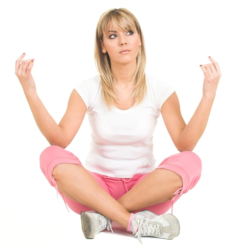Quick Guide to Ashtanga Yoga
Practicing yoga can help you live a more peaceful life. In our chaotic world even our daily schedule can get overwhelming at times.
If you need a way to decompress and to get back in touch with yourself, yoga may be your answer.
Different Types of Yoga
There are several forms or types of yoga, including Bikram, Hatha, Iyengar, Vinyasa and Ashtanga yoga to name a few of the more popular ones; in this article, we focus on the classical Ashtanga (not to be confused with Ashtanga Vinyasa or Power Yoga). This type of yoga consists of three series of poses: Primary, Intermediate and Advanced. While each series consists of a different set of poses, they all have two things in common: starting with the Sun Salutations, before moving to the first set in the series, and ending with back-bending, shoulder stand, headstand and the lotus.
The Sun Salutation
Sun Salutation series consists of eighteen poses that purify the body and restore health, along with preparing the body for the Primary series, also known as Yoga Chilkitsa or Yoga Therapy. From the Sun Salutation series, up to 75 different standing poses can be performed, depending on the routine developed by your instructor. Performing the total array takes around 1 ½ to 2 hours. The intent of the Primary Series is to prepare the body for the more difficult seated poses which follow next.
The Seated Poses
These poses require more concentration and coordination than other types of poses, if done correctly. They start out with the Dandasana pose where your legs are out in front of you. This is followed by three forward bend poses and a reverse plank. While the forward bends stretch out your back, the reverse plank stretches out the front of your body. Each series of poses are meant to build on the previous set. The workout ends with the Corpe Pose, signifying total relaxation of the body and mind.
The Need for Deep Breathing
Another element of Ashtanga is deep breathing called thoraco-diphragmatic breathing. By inhaling deeply, oxygen gets to parts of the body that are normally devoid of oxygen under normal breathing conditions. Forceful exhalation, by using the diaphragm, pulls the toxins out of the body with the outgoing air, thus detoxifying and restoring it to its original healthy state. This type of yoga not only develops your body by concentrating on aligning your spine, detoxifying and building stamina and flexibility, it also develops a healthy mind by increasing the awareness of your body.
